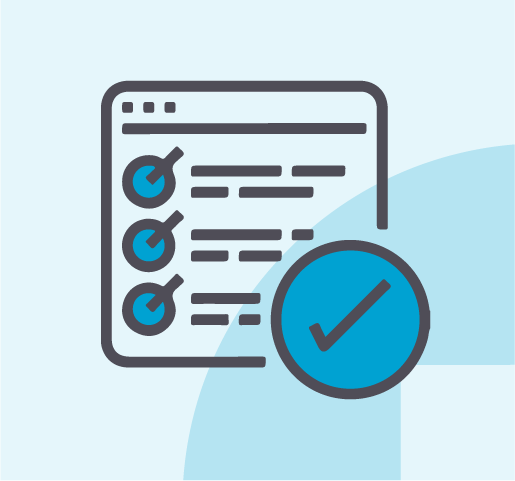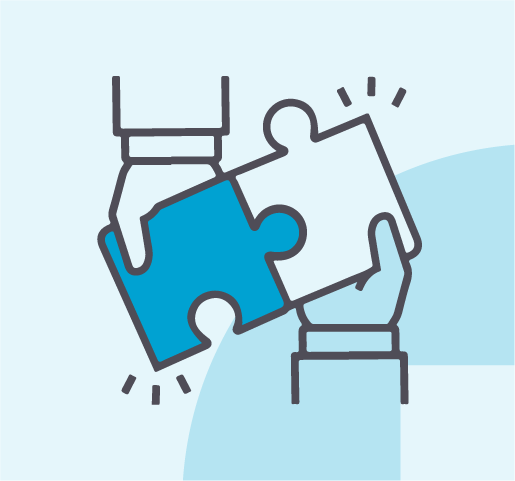Over the years, cyber attacks have become more frequent and sophisticated. It seems like hardly a day goes by without news that an organization has been compromised by a security breach.
According to CSIS, these cyberattacks cost businesses a loss of around $600 billion every year, and this number is increasing continuously.
This drastic rise in cyberattacks from 2021 has made it important for businesses to implement a holistic security approach. Without a strong security policy, organizations will continually be victims of new threats.
Generally, the software development processes postpone security checks to the end of the application development life cycle. It makes the process inefficient as it is hard to identify and resolve security issues at the end of application development. However, what they fail to realize is the fact that security is not something that should be considered in the end.
For building a secure application, the best way is to integrate security at the start of the software development life cycle. The modern software development pipelines help in resolving this issue by introducing DevSecOps. It's a project management framework that combines development, security, and operations. DevSecOps aims to bridge the roles of different team members together so that better and more secure applications can be developed.
With the help of DevSecOps, you can detect the security issues at a time when they are less complicated and easy to fix. Integrating security in all the phases of the software development life cycle makes the entire development process less expensive.
Before proceeding further to implement the DevSecOps in your organization, you need to learn about the components of DevSecOps. It's important to consider these components while implementing DevSecOps. There are five critical components of DevSecOps; collaboration, communication, automation, securing tools and architecture, and testing.
Keep reading this comprehensive guide to learn the following:
- Five components of a successful DevSecOps approach
- How to implement DevSecOps in an organization?
- Conclusion
RELATED COURSE
Automated DAST in CI/CD using OWASP ZAP
Learn to perform security scans in a running web application. Deploy a website in our hands-on lab and run scans using OWASP ZAP!
5 Components of Successful DevSecOps Approach
The components of the DevSecOps are the major pillars supporting the basic principles of the DevSecOps, aimed to integrate the security standards throughout the software development lifecycle.
Let’s have a look at the five essential components of the DevSecOps process:
- Collaboration
Collaboration is one of the most important components of the DevSecOps process. DevSecOps makes the software and infrastructure security a shared responsibility across the development and operations team instead of leaving everything to a security team.
This component only focuses on finding and carrying out the essential steps to develop high-quality and secure software as fast as possible, fulfilling all the security requirements.
The security team initiates the process of incorporating the security standards into development processes by determining all the phases of the application development life cycle and then integrating security into it. It helps automate the security tasks and deliver the security capabilities in small and frequent instalments. Also, the developers should have knowledge about the security standards, security tools, and threat awareness.
- Communication
Communication can make or break the DevSecOps process. Without proper communication during the software development processes across the development and operations teams, collaboration can’t be possible. So, there should be clear and proper communication about the security controls and standards.
While developing an application, ensure that there is no communication gap between the development and security teams. The security experts should use developer-friendly language to communicate with the development team about security and compliance.
Developers should have a better understanding of their security-related responsibilities to fulfil their responsibility as the contributing partner in developing secure applications. These responsibilities are knowledge of security vulnerabilities and creating code considering security best practices.
- Automation
Automation is also an important component of the DevSecOps process. It's important to automate security at the start of the development process. It will help in embedding the security measures within the application development process so that security does not become a burden in the development phases.
The automated security testing and analysis should be integrated throughout the continuous integration and continuous delivery pipelines. It will help in delivering a secure application. The automation testing techniques and tools enable the real-time testing of the software, applications, codes, and APIs without slowing down the application development process.
The addition of automation tools throughout the development process enables the security controls to send the alarm when any risk level rises over a predetermined level. When any risk arises, all the building processes freeze until security teams resolve that particular security-related issue. Once the issue gets resolved, developers can start deploying the application.
- Security of Tools and Architecture
Security of tools and architecture is the next main component of DevSecOps as it ensures that all the security policies are defined, communicated, and followed throughout the development life cycle.
To develop secure software, it is essential to have a safe production environment. The DevSecOps process is loaded with a set of several tools and architecture. So, the security team needs to take care of the security standards for protecting security tools, access, and architectural configuration.
For a smooth application deployment, the security team needs to detect and fix the vulnerabilities very carefully. Moreover, they should control the access to DevSecOps architecture and protect the credential usage throughout the application development cycle. There are several tactics to control access like least-privileged access, multi-factor authentication, and just-in-time temporary access.
Security and compliance controls are integrated into the DevSecOps infrastructure to cover all the processes of the software development life cycle. Furthermore, monitoring, vulnerability scanning, and vulnerability fixes are performed regularly on all the workstations and servers for security purposes.
- Testing
Usually, the security testing was the final stage performed before the software's release. It makes the application development process time-consuming and costly. So, the best way to fix this issue is to conduct security testing throughout all phases of the software development life cycle. The frequent testing will help you in scanning and removing the vulnerabilities from the application development cycle instantly.
The infusion of automated testing is important to keep the security up to date with the development process. It helps in analyzing the whole code throughout the development process for malicious code. Different testing scans the application source file, finds the root cause, and helps resolve the underlying security issues. There are also some other forms of testing performed on a regular basis, including penetration testing, threat modeling, static and dynamic application security testing, etc.


How to Implement DevSecOps in an Organization?
Shifting from DevOps processes to DevSecOps is the evolution of the way in which the entire team thinks about security. It will change the organizational culture in terms of team autonomy, continuous feedback, and training for the technical staff.
The introduction of DevSecOps in the organization will offer improved compliance, security, and competitive advantage. But, before starting the DevSecOps journey, you need to understand it and make a proper plan to implement it successfully.
Here are some tips that you need to consider while implementing the DevSecOps in your organization:
- Identify the ways to integrate automated security testing throughout the software development life cycle.
- Conduct security awareness training programs for the DevOps teams to provide them with knowledge about security risks, secure coding requirements, and tools to create secure code.
- Educate the organization-wide and security-centric culture about security shared responsibility.
- Inform developers about the current hacking techniques and teach them to think like hackers to protect their applications from security breaches.
- Monitor the security risks in a shared tracking system to enhance visibility across all departments.
- Provide relevant benchmarks to demonstrate the improvement of the development process over time.
Remember that it will take time for the development, operation, and security teams to fully shift their mindset according to the new DevSecOps processes. So, continue to emphasize security standards during daily activities to raise awareness.
Takeaway
Since the time of the introduction of DevSecOps, it has transformed the way of handling security during the application development life cycle. It has proved effective in numerous ways, from improving security to speeding up the development process to bring more value to the organization.
Let’s face it, properly implementing DevSecOps in an organization is not about choosing the right tools, it is all about enabling the DevSecOps organizational practices as a shared responsibility between development, operations, and security teams. DevSecOps can be created, implemented, and managed successfully by considering the five most important components of DevSecOps.
Hopefully, this blog helped you learn the key components of DevSecOps and the way to integrate it into the software development life cycle.
Do you want to adopt DevSecOps for your organization? Don’t know where to start? Everable offers a number of courses to upskill your team to create a DevSecOps culture in the organization to deliver secure products in a fast-paced environment.
For more information on DevSecOps and how we, at Everable, can ensure a successful transition book a connect call here with one of our team members!
